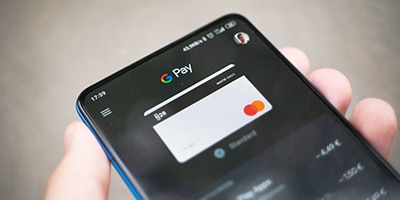
The big players in mobile wallets (Google Pay and Apple Pay) have focused on credit and debit card payments, yet millions of consumers in the U.S. and worldwide deal in cash or prepaid gift cards. To accelerate the use of mobile payments, the hot new innovators are combining the best of card and cash payments, allowing consumers to expand the options available to pay through their phone.
Cashing in on mobile payments
90% have a cell phone
64% have a smartphone
Pew Research, October 2014
Research tells us that nearly everyone has a mobile phone, and even those who have a limited banking relationship are increasingly using their phone to pay for goods and services. That tells us there’s a growing opportunity to bring a cash-like experience to mobile phones.
This strategy is catching on with technologies such as Wipit and Paytm Wallet, which enable customers to make cash payments directly from their phone, by adding money into their mobile wallet (for a small fee). With the Wipit app, users can also load checks into their mobile payment account by taking front-and-back pictures of checks, the same way you make a mobile bank deposit. Both apps also make it easy to send cash payments to friends or pay for services like Uber.
To expand their reach and adoption, major providers of mobile wallets should increase their payment options to appeal to the many consumers who use hard cash to get by. As an example, Paytm’s wallet has enabled India’s largely cash-dependent population to make mobile payments, which may help boost their economy.
How EMV will move the needle for mobile payments
Another key driver in the mobile payments revolution is America’s transition to EMV chip-enabled credit and debit cards. To keep up with this global security standard, merchants and businesses are required to upgrade equipment to accept the new cards by October 2015. It’s an ideal time for companies to also gear up their ability to accept contactless payments, especially when the latest smartphones are equipped with chip-like technology for managing more secure mobile wallets.
As one financial industry expert put it, “We don’t know what is going to happen with [mobile wallets]… if it’s going to turn into an absolute must have in the next year. It’s pretty clear that over time, cards will be used less and the mobile form factor will increase in value to consumers.”
The mobile mindshift is becoming a reality of everyday life, which means consumers may eventually expect to pay for everything through their phone, with the same flexibility as when they pay from their pocket. Both mobile wallet providers and businesses need to be agile and ready for this evolving demand, as it may become a key differentiator in the customer experience.

